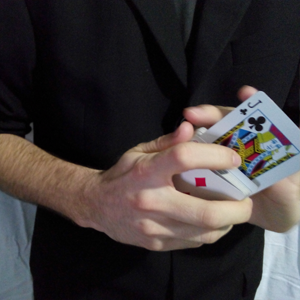

“Nic load” by Nicolae Mihale
Hello, My name is Nicolae Mihale
Before I begin I must mention that I hold the cards in my right hand so if you are using the other
hand please reverse the actions that I’ m going to describe.
Short history
I came up with this move while I was practicing the Roy Walton’s paint brush change. I was
doing the move while walking on the road and instead of keep doing a double lift every time I
ended up creating this move.
The move is not completely original there were other attempts of doing it but none of them looks like
this version.
Description:
It is a utility move, as soon as you master it you’ ll be able to improve almost any effect that
uses a double lift or other effects. The possibilities are limited only by your imagination, even simple
effects can be improved by using this move.
Nowadays there are many people that know about the double lift, and it’s a tough thing to deal with
when you are performing for real people. I think the double lift is a great tool in card magic if you
perform it perfectly and in a smart way.
While you are practicing this move please use it is a smart way, as it is an alternative to the double
lift. One other great advantage of this move is that is almost angle proof and I’ lll cover that later.
How it works:
It is very important that everything is done in a relaxed fashion as “nothing is supposed to happen”.
Hold the cards in a loose mechanic’s grip in your right hand, hold a card face-up in the left hand in
the following manner: The card is being held by the outer corner, the thumb is slightly forward
from the corner, the index and middle finger hold the card from underneath and the ring finger is
resting on the bottom short edge of the card. This way of holding the card should look very natural.
The right hand fingers should be in the normal mechanic’s grip but a bit deeper similar to way you
would perform the KN move.
Tilt the deck so that it becomes perpendicular to the floor. This tilt should last for a split second.
Push the corner of the left hand card into the index finger of the right hand. The edge of the card
should be close to the deck. As you slightly rotate your left hand wrist upward you ll notice that the card
begins to bend. Bend the card until the edge touches your right hand thumb.
As soon as the edge touches your right thumb, the pinky finger of your thumb drags the top card of
the deck downwards similar to the Lennart Green’s top shot. The card should not be very far from the
deck as little space is needed to perform this move.
When the top card is lifted lower the left hand card until the inner bottom corner reaches the inner
bottom corner of the deck. Before you reach to that position lift your left index and middle finger
and hold the cover card only between the ring finger (that was resting on the edge of the card) and
your right hand index finger. You ll notice that now both cards almost get aligned.
As you stroke the “card” that are now two cards upwards use the fingers to align the two cards
perfectly. You can also tilt the deck back to your original position.
To make this angle proof you have to keep your hands low and make sure the deck is lower than the
spectators eye level. Also it’s worth saying that at times you might not be getting it or you might be
very nervous, allways use a bit of misdirection when performing. When I perform for real people I
never look at the cards when I perform this move because as I said nothing is supposed to happen.
NIC load:
Starting position Stroking the card
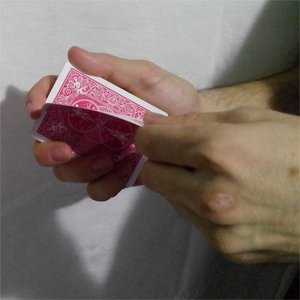
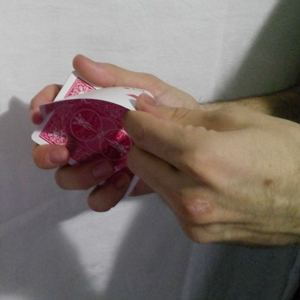
Beginning of the load Squaring the cards
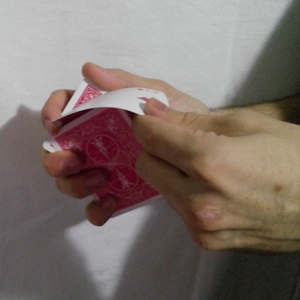

End of squaring End of the move

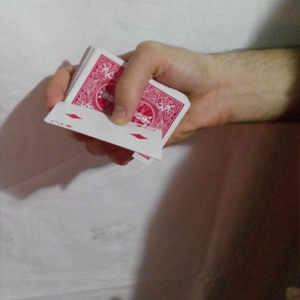
(Nic load) Bottom view:
Starting position Stroke up

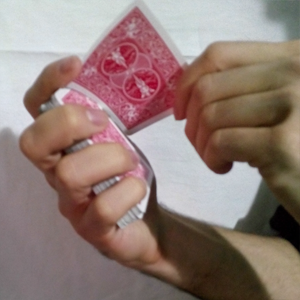
Beginning of the load Squaring the cards
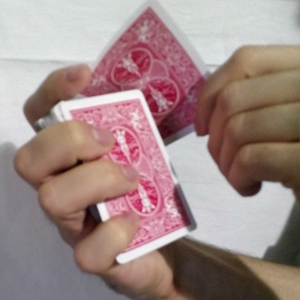

End of squaring End of the move
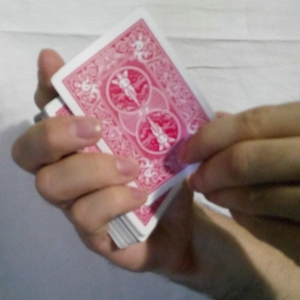

Ideas to use with:
• You can “stroke” the card twice or more times and load more than one card underneath.
• You can load one card underneath and perform the Paint Brush change.
My favorite idea is to use the Paint Brush change like in Bill Godwin’s idea to unload the
front card on top of the deck, with this two moves you can cleanly switch a card
invisibly right in front of the spectators, this can improve a lot any simple effect like
asking spectator to choose a card, control it to the top and then tell them you found their
card(false cutting and produce a card), perform the Nic load and then the paint brush
unload leaving the “wrong card” on the table, which can be revealed later in any
fashion.
• You can “split cards” a three of diamonds into a two and ace of diamonds: Have the ace and
a two on top of the deck and force the three of diamonds. Get the card and steal the top card
underneath, perform the Nic load and then the Paint brush change showing that you split the
card in two.
• You you load a card by mistake you can use the KN move and unload the card.
• You can use Alex Pandrea’s Monet and as you come to display the changed card you can
use Nic load and then the Paint Brush change/unload.
• As an experimental idea you can try loading cards under objects(under the phone or
envelopes).
• You can use this principle as Chris Kenner’s four for four switch, however the handling is a
bit different, take a break under three cards and drag down the forth card, this card will lever
the other three cards and you can load these cards under the cards that you want to switch.
As a final note , in case of loading a wrong card you can use the KN move to unload the card.
At the end of this document there are pictures containing all the steps of how to perform this move.
A simple switch 1 (NIC switch 1)
This move is so simple I’m surprised I haven’t seen it anywhere.
Let’s say that the top card of the deck is the selected card. Swing cut half the deck in the right hand
and push the selected card in front. Rotate the right hand showing the selected card.
As you lay the other half over the rest of the deck the card gets switched. This move is angle proof.
Method:
Before you lay the left hand half over the rest of the deck you perform a glide, now extend your ring
finger and pinky still holding the card. Lay half this deck over the right hand deck and use your
right index finger to push the selection flush with the deck. Because you extended the fingers you
should have a card out-jogged that appears to be the selection.
You can use this as an impromptu switch or as a force. To use it as a force have the forced
card on the bottom of the deck and cut one third of the deck in the right hand and start peeling cards
from the left hand pack until the spectator sais stop.
When the spectator sais stop push the card forward and perform the move switching the card for the
forced card. This move has a stronger motivation if as soon as you lay the other half over, switching
the card you say that you ll grab a marker and do so with your left hand. This just makes it seem
more natural for putting the other half over.
Simple switch 1 (NIC switch 1)
Out-jogged card Beginning of the move
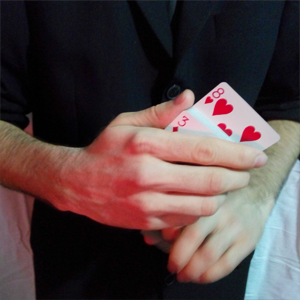
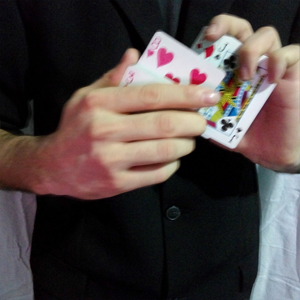
Starting the switch Dropping the switch card with the top cards
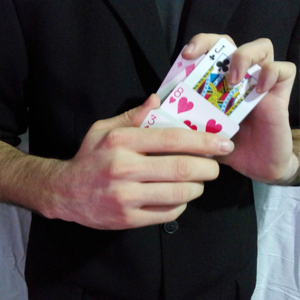

A simple switch 2 (NIC switch 2)
This is an other great move that I use a lot. It has a nice feeling and is mostly angle proof.
As you cut the deck and retrieve a card from the spectator, it often happens to outjog the selected
card just so that the spectators can keep track of the selected card. However in this motion you can
hide a very cool switch. Here is how this happens:
1) You take the card from the spectator, the card is flush with the deck.
2) As you come back with your left hand (keeping a biddle grip). Your right hand(mechanic’s
grip) ‘s litlle finger performs something like a top shot levering the card so that the left
hand can grab it flush with the deck.
3) As the stolen card becomes flush your left middle finger and ring finger outjog the top
card.
If it is performed properly it should seem like you just outjog the selection. From here there are few
options:
• perform an outjog herman shift and the card will end up on the bottom
• after outjoging the card you can move the left hand to the left and as you move the
“selection” diagonally you do a bottom replacement and the card ends on the bottom.
• you can do as above but as you move the card to a diagonal position your right(mechanic s
grip) fingers perform something similar to side glide and the card can end up in your palm.
• After steeling the card you can perform Chad Nelson’s clipshift and the card ends up on top.
Simple switch 2 (NIC switch 2)
Beginning of the move Beginning of the steal
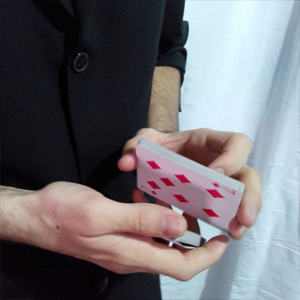
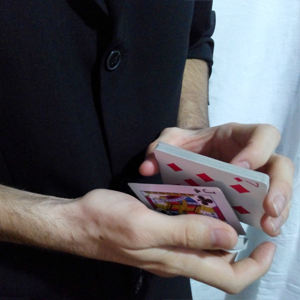
Squaring motion
End of squaring Beginning of out-jogging

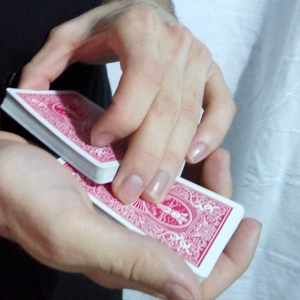
Pushing forward End of the move
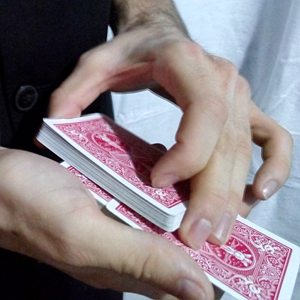
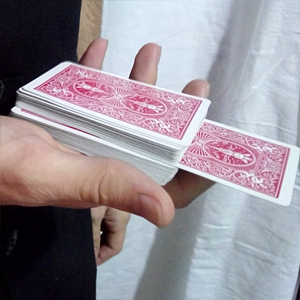
Nicolae Mihale nicolae.mihale@gmail.com




